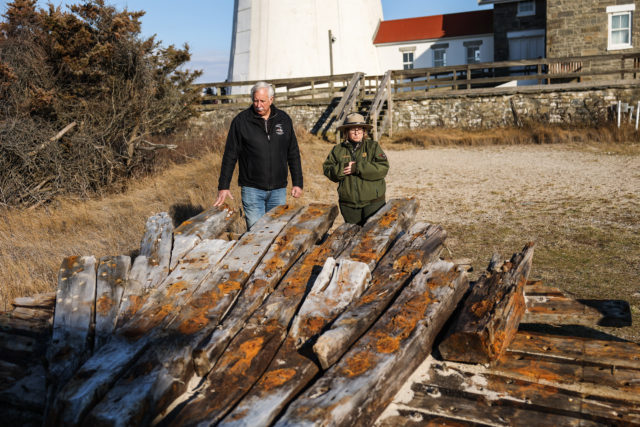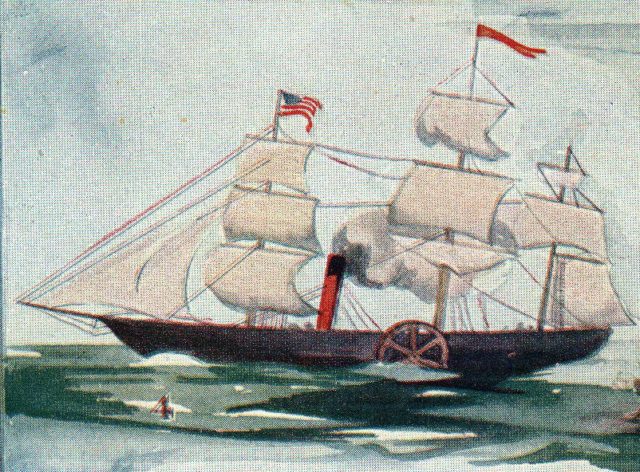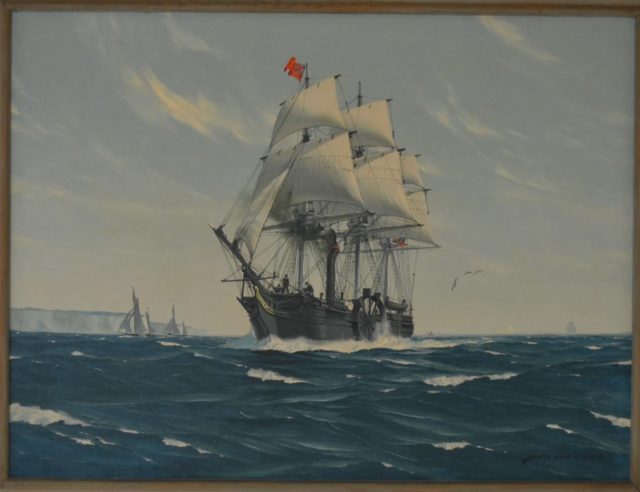The discovery of a large piece of what appears to be ship wreckage drifted ashore on Fire Island near Long Island, New York following a series of intense storms on the East Coast. The piece is believed to be part of the legendary SS Savannah, famous as the first steamship to cross the Atlantic Ocean. If it is true, then a fine piece of history has been uncovered, allowing researchers and experts to get a clearer image of the history of both the vessel and the area.
A large piece of wreckage was found on Fire Island

A large chunk of weather-beaten flotsam was spotted on the shores of a barrier island hugging Long Island, New York following Tropical Storm Ian in late 2022. The piece of wreckage measures about 13 square feet and washed up on Fire Island’s shoreline.
Since its discovery, the flotsam has gone under the custody of the Fire Island Lighthouse Preservation Society which is working with the National Park Service to identify it and put it on display. Interest in the discovery has increased as experts say they believe the wreckage is likely part of the SS Savannah, the first ship to cross the Atlantic Ocean partially under steam power.
“It was pretty thrilling to find it,” said Betsy DeMaria, a museum technician at the park service’s Fire Island National Seashore. “We definitely are going to have some subject matter experts take a look at it and help us get a better view of what we have here.” Multiple shipwrecks have occurred in the area, but there are some indications that suggest this flotsam could be from the Savannah.
Why this might be from the legendary ship

For two centuries, people have been searching for debris from the Savannah near Fire Island with no luck. Nothing found has been definitively linked to the legendary ship. However, there are some details from this particular piece of wreckage that have made experts hopeful they may have finally found something belonging to the Savannah.
The first pieces of evidence are the 1-to-1.13-inch wooden pegs holding the planks of the wreckage together. That size peg was used in vessels measuring around 100 feet long. The Savannah was 98 feet six inches long. Other key evidence includes iron spikes found within the planks. Their use suggests that the ship they came from was built around 1820, falling in line with Savannah‘s own timeline. She was built in 1818.
Ira Breskin, a senior lecturer at the State University of New York Maritime College in the Bronx, says this flotsam could “very well could be” part of the historic shipwreck: “It makes perfect sense.” Breskin added that the help of a nautical archaeologist would help to identify the wreckage. “It’s plausible, and it’s important, and it’s living history if the scientists confirm that it is what we think it is,” he said. However, it cannot yet be identified as part of the Savannah wreckage with 100 percent certainty.
A short history of the Savannah

The importance of this discovery and its potential link to the Savannah is not lost on many residents of Fire Island, but some forget that it was the Savannah that led to the US’s National Maritime Day on May 22. That marks the first day of the ship’s transatlantic voyage in 1819, which was significant in that the ship was partly powered by a steam engine, revolutionary for its time.
The Savannah was equipped with a 90-horsepower steam engine that was used for 80 hours of the almost month-long trip it took. When it wasn’t using the steam engine, it traveled under sail as it made it to Liverpool, Sweden, Russia, and back to Savannah, Georgia. “It’s important because they were trying to basically show the viability of a steam engine to make it across the pond,” Breskin said. The Savannah became the first ship to cross the Atlantic Ocean partially using steam power.
However, Savannah’s popularity didn’t last. The ship became a financial burden as people were wary of traveling using the hybrid engine system. As such, her owner was forced to sell both the ship and the engine separately after the Great Savannah Fire of 1820 worsened their financial situation. She ended up becoming a cargo transport vessel between Savannah and New York until running aground on the shore of Fire Island in 1821.
More from us: Clothing Found in a 350-Year-Old Shipwreck Reveals How the Wealthy Lived
All members of the crew survived the disaster, and the cotton cargo it was transporting was also recovered. The ship itself broke apart and was lost to the waters.
